Masters of Handmade
Over the years we have developed close working relationships with artisans in eleven different villages across five countries and we are honored that they equally value our partnership and combining their traditional handmade textiles into accessible and functional products such as a travel backpack. Our artisans are true masters of their craft and so much more! They are parents, community leaders and entrepreneurs in their own right. Many of them are educated and have returned to their villages to continue their family weaving businesses. They are business and tech savvy and are not looking for hand-outs. They're looking for business! They are looking to connect a wider global audience the products they make in the effort to preserve their own culture and craft.

An artisan's culture and personal expression are literally woven into their fabric. Driving demand to their villages is a direct result of you purchasing an Ethnotek bag. Purchasing their handmade fabric finances the continuation of these crafts and the culture that is woven into them. Positive social impact and cultural preservation through commerce are at the core of what Ethnotek stands for.


Our handmade Ghanaian fabrics are block printed in collaboration with Reiss Boafo and the artisans of General Artz in Accra, Ghana. A block of wood about the size of a human hand is shaved smooth by a machine so it has a perfectly flat surface. (Some blocks are left square on top and some have handles carved into them.) Then the intricately designed Ghanian motifs are carved into the block using chisels, knives and files.
Both batik and tie-dye were introduced to Ghana from South East Asia in the 1960s. They grew popular from the middle 1960s to the late 1970s. The patronage of this fabric declined significantly in the 1980s due to various reasons some of which include a preference for a cheaper alternative import. It has however seen a revival in recent years.

Early African tie-dye involved a lot of spots and specks on the designs. They tied as well as stitched the fabrics to achieve a look different from the rest of the world. Other techniques such as painting and splashing the wax onto the fabric before dying is unique to African batik.
Batik has been used as an industry to alleviate poverty in rural areas alongside other textile making art forms. Due to the fact that small startup capital is required to establish the business, many women have set up businesses from their homes producing very brilliant and colorful designs for the local and international markets. We couldn't be more proud to be a part of this process!



From the desert to the mountains, seas to volcanoes, and camels to toucans, our woven textiles span a variety of different landscapes, have deep cultural roots and are as unique as the artisans creating them… It’s time to tell the story of the handloom weaving process!

The small mountain town of Paxtoca (pronounced pash toca) just outside of Quetzaltenango, Guatemala, is a hotbed for woven Mayan textiles. Agriculture is still the primary source of income for locals (mostly corn and apples), but textile creation is very much the life blood and identity. The local women and some of the men from older generations continue to wear their traditional Mayan clothing, known as tipica.

The process begins by spinning cotton yarn into carefully measured sections called “cordeles”, which is then compiled into a larger batch of yarn called the “labores”. The cordeles are stretched over a wooden frame and separated into several individual bundles and then, in a pattern known only to the artisan, tied into small knots. These small knots define the motif and resist dye during the dying process.



After dying the cordeles, they are spun onto a wheel that creates multiple bobbins which are then loaded into the shuttle that is used during loom weaving to define the weft (the horizontal direction of the textile). The “warp” is the long vertical direction of yarn that makes up the bulk of the base fabric.

The type of loom used in Guatemala is called a “treadle loom”, which is a large wooden framed loom. The beam at the front of the loom feeds the warp yarn into the head of the loom, where the artisan sits to create the motif and warp. A wheel just underneath the artisan is wound tightly to spool together the finished textile after weaving.

One of the most important steps in the weaving process is a series of up & down motions that separate layers of the fabric to allow the shuttle to pass through. This motion defines the motif and is operated by foot pedal by the artisan underneath the loom. The process is very rhythmic and almost seems to create its own drumbeat as the artisan weaves.

In the end, the motif and colors are magically revealed! Though we understand the process well, it’s always mind-blowing how it results in this kind of detail. Starting from just yarn and a picture in the artisan’s mind, patterns of Mayan people, animals, spirits, and plants emerge on the finished textiles.


Now we journey to the Great Rann of Kutch! The word Kutch (pronounced “katchh”) comes from Kachwa, meaning “a turtle that has come out of the sea”. This vast crescent-shaped region belongs to India’s second largest district, Gujarat, and is bounded by the Arabian Sea to the west and Pakistan to the north. Archeological records suggest that pre-historic man appeared in Kutch 30,000 years ago. Present-day Kutch is home to twenty-five different ethnic groups spread across more than a hundred villages. Two of those ethnic groups, the Vankars and Rabaris, are closely stitched into the Ethnotek story.

Pit loom weaving is the main form of weaving adopted by Kutchi artisans. Pit looms consist of a concrete pit dug into the ground where the weaver sits so that he is level with the loom. The pit also houses the weft paddles that the artisan operates with his feet. Pit looms are easier to set up inside the home because they don’t consume as much space as a frame loom and are also a way to beat the desert heat while working.

The pit looms of Kutch use a manual throw shuttle and hand warping, which in essence is embroidery on a loom that requires great skill, attention to detail and patience. The result is stunning works of art with dancing geometric patterns whose authentic look and feel are nearly impossible to recreate on a machine.

While it is mostly the men who do the weaving in Kutch, the process is a collective effort involving the whole family. The mother, the wife and the sisters prepare the yarn for dying and make bobbins from yarn hanks, which they then set up into the loom’s warp in preparation for the weaving process to begin.



Meet Sanjay and Suresh, (pictured above), 20-year-old twin brothers who have actively chosen to stay in the village of Kandherai to continue their family weaving business. On our sourcing trips, it is commonly seen that younger generations are becoming increasingly demotivated to carry on traditional handicraft, so it’s refreshing and inspiring to see these two champions taking matters into their own hands! The artisans in India put a high-priority on preserving their culture and see global commerce as a great vehicle for that cause. We’re proud and honored to get behind them and support that mission.

Premji, (pictured above), has been friends with our head artisan, Shamji, for many years and was the first artisan commissioned to weave textiles for Ethnotek. With the weaving experience that Premji had under his belt, he needed no training to get started on fabric orders for our bags and has been with the Ethnotek-India team since the beginning. Premji is so important to us that we even feature him on the hangtags for our bags!


The handmade fabric featured in Indonesia 6 Ethnotek bags come from the artisan's hands of Surakarta, Indonesia. In the form of batik dyed cotton, these cool-colored works of art are a modern take on some very traditional techniques, both in batik fabric design and classic East Asian architecture.
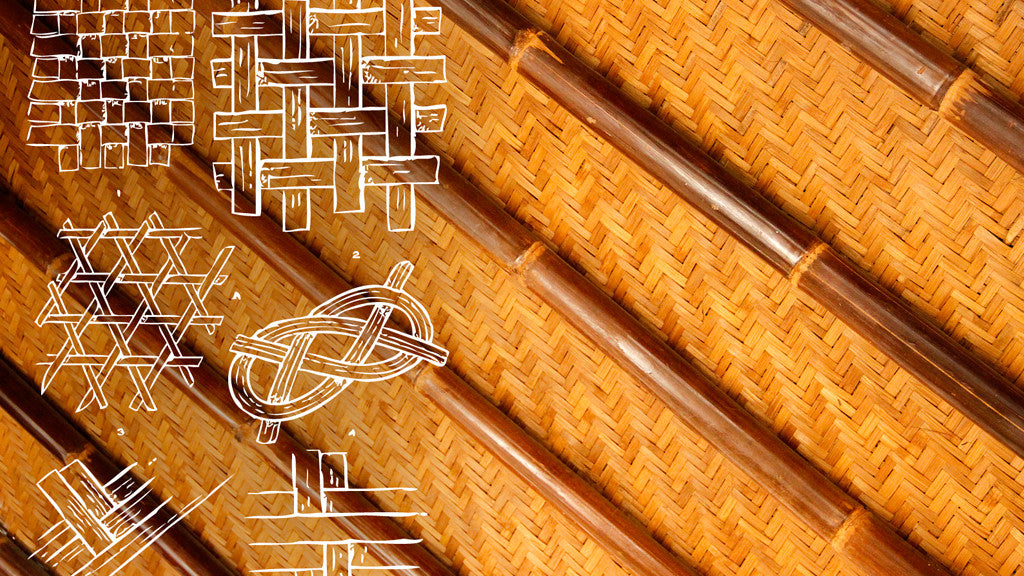
Woven reeds, palm leaves, and wild grasses have been a multifunctional mainstay for most cultures from Peru to the Philippines. The design for the Indonesia 6 fabric came from this classic weaving style that is widely used in Indonesian architecture for roofs and walls, but mostly in floor mats called Tikar Pandan in Surakarta. These mats are rolled out every night at Warungs (small street-side cafe's) where people gather to eat late night snacks and drink tea. Let’s take a look at how they do batik, Surakarta style!

Step 1: Begins with a drawing, via pencil and parchment paper so there is some translucency, which is key for artists to trace their ancestor's designs allowing the copper stamp maker to then translate that into the tool.
Step 2: Is taking copper scraps and magically bending them into form to match the artist's drawing. It's mind blowing how they do this! Copper strips manipulated with pliers, hammers, shears, picks and files, true craftsmanship!
Step 3: The artist comes to do a quality control check to make sure the copper craftsman's tool matches his/her drawing.
Step 4: The approved or adjusted tool makes its way onto the wax stamper's shelf.
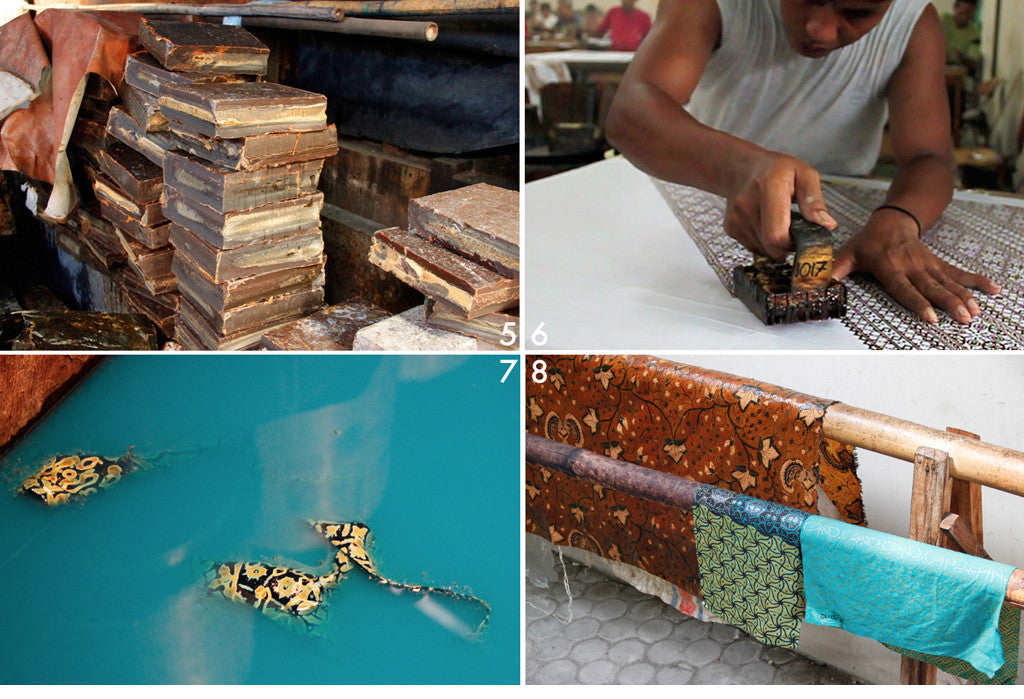
Step 5: Is all about reduction... The "batik chef" who knows the precise recipe for the batik wax, melts the wax so the stamper can apply the wax to the cotton fabric.
Step 6: The stamper then takes the artist's and coppersmith's tool, dips it in the chef's wax and ever-so-carefully applies it to the virgin cotton fabric. Now that the wax has been applied and has seeped into the fibers of the cotton it is ready for the next step.
Step 7: The cotton fabric is then bathed in dye.
Step 8: Is the easiest of all, hang it out to dry!
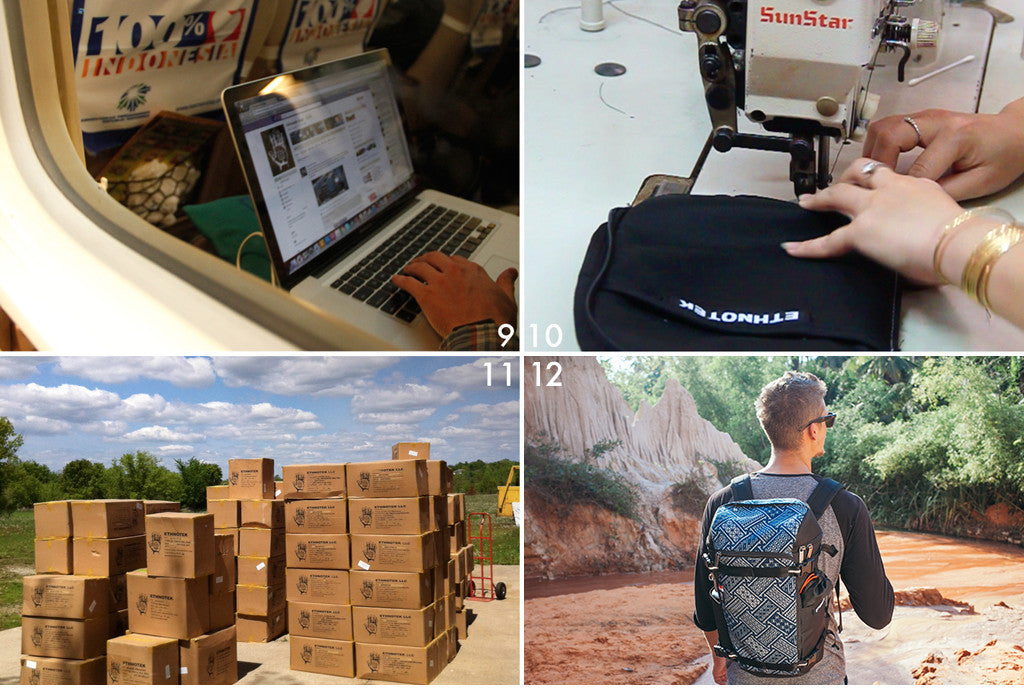
Step 9: We gather Ethnotek customer orders and then place a bulk fabric order with the artisans.
Step 10: Once the fabric arrives at the ETK workshop in Vietnam, it is sewn into finished Ethnotek bags with tender love and care.
Step 11: These hot new items are ready to ship to you!
Step 12: The cycle is now complete! When you buy a bag with these fabrics, it supports artisan employment for the continued creation of them, which in turn, helps preserve the culture that is literally woven and stamped into every piece. You can then wear your bag with pride, knowing the story behind it and lovely people who made it by hand.
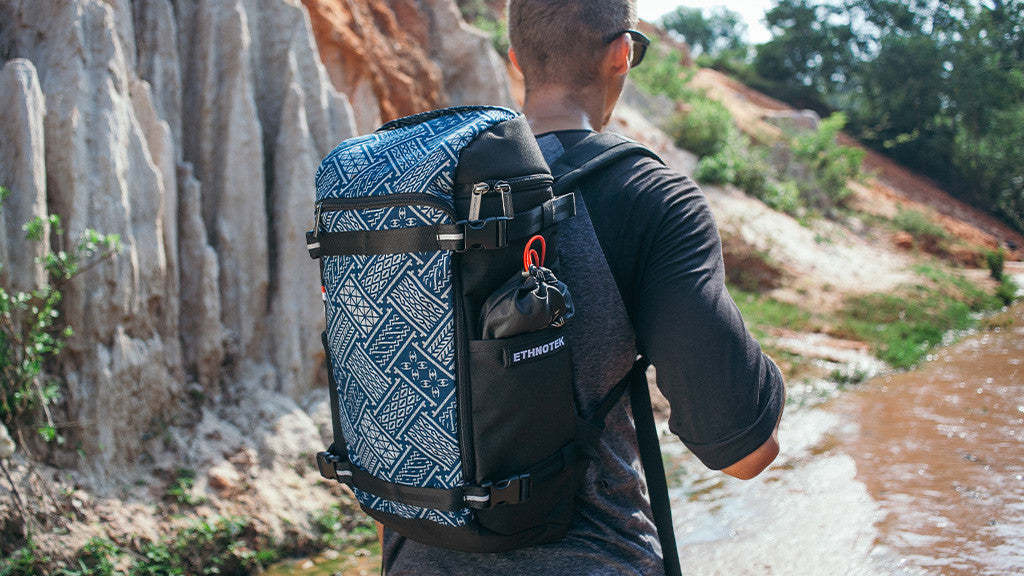

We've always valued and connected with open landscapes, dirt roads, raw culture, traditional techniques, handmade processes, and vibrant color. A couple places that capture it all and is one of our favorite areas, is Sapa and Lai Chau, in the northern highlands of Vietnam.
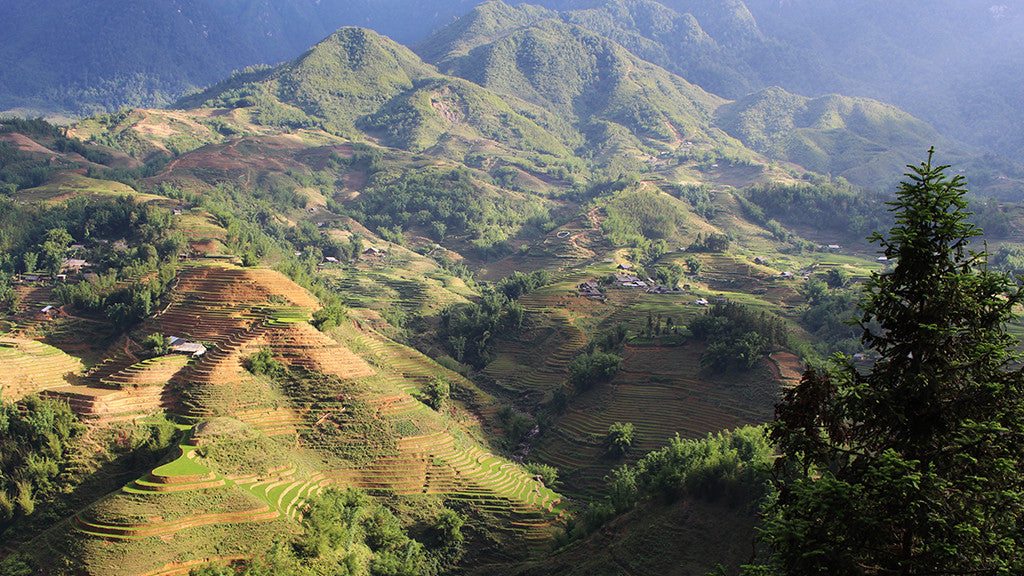
Nestled high up in the Hoàng Liên Son mountains of northwest Vietnam, overlooking the terraced rice fields and stretching between Dien Bien province in the east all the way to Cao Bang province in the North is the Hmong community.

The Hmong ethnic group originally migrated southward from China in the 18th century due to political unrest and to find more arable land in northern Vietnam, Laos and Thailand. Hmong are the largest of Vietnam's 54 ethnic groups, which has numerous subgroups such as the Black, Red, Green, White and Flower Hmong communities, each with their own dialect, belief system, cultural customs, dress & handmade textiles.
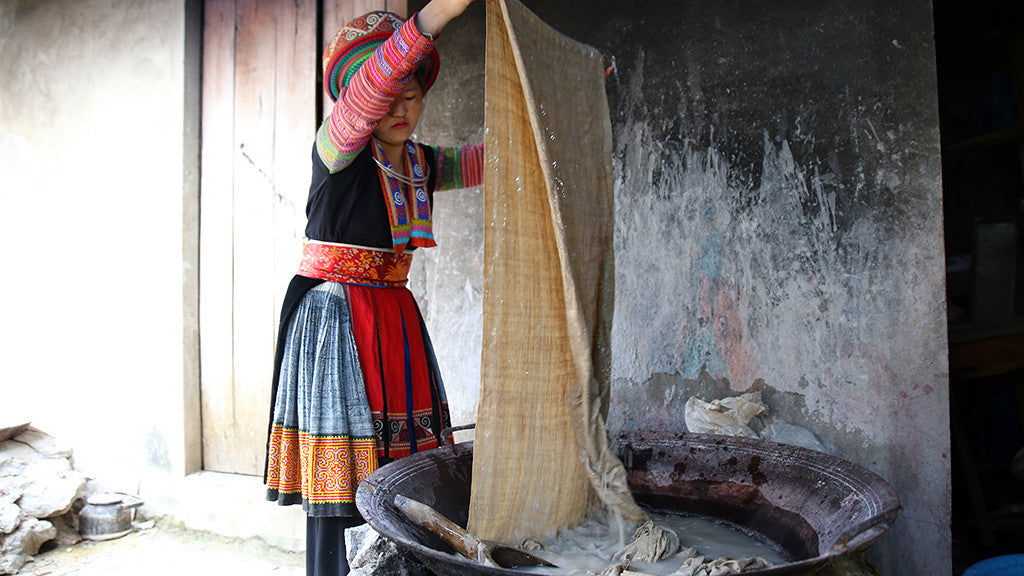
For centuries, Hmong women have been making clothes for their families by hand, often learning by the time they are six or seven years old. A Hmong woman will continue to weave and embroider her entire life, and a woman’s beauty and intelligence is gauged by her textile making skills.
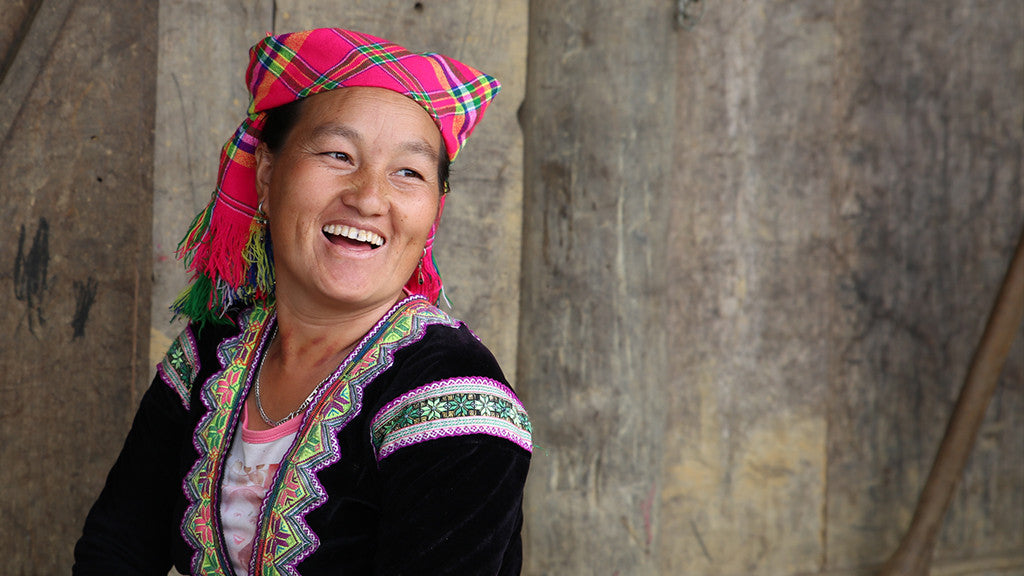
With only one rice harvest a year, the women of Sapa and the surrounding villages spend their days immersed in crafts - chatting over tea while embroidering, dividing a roll of linen fiber at the market, or sitting with friends preparing their threads. If there is a fiber that runs through a Hmong woman’s identity, it is quite literally her textile craft.
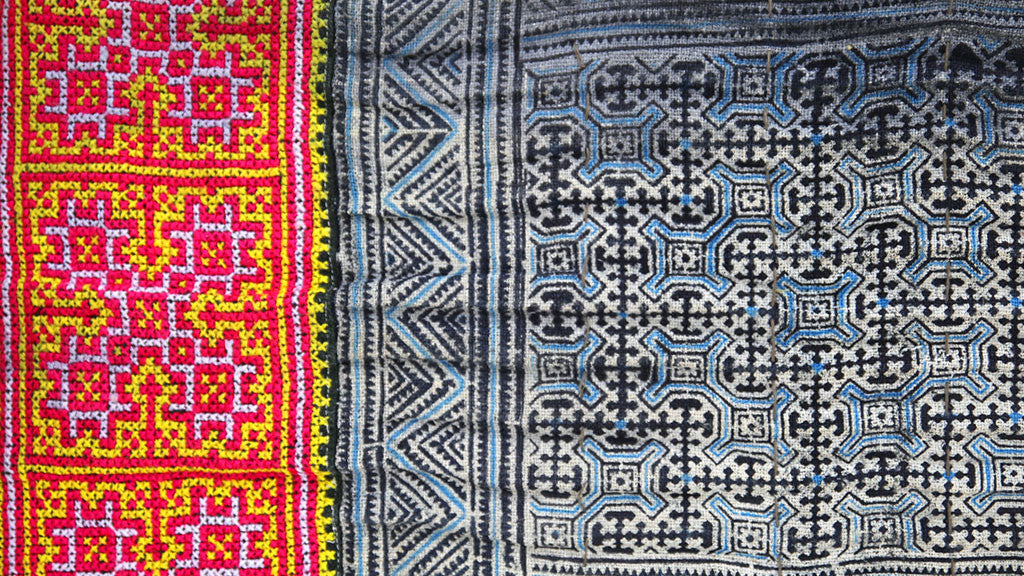
The Hmong believe others of their same tribe can recognize them based on the fiber and embroidery style they are wearing. Their strong attachment to their craft even transcends into their spiritual beliefs. They believe that when they pass away, their children will dress them in their tribe’s corresponding fiber so their ancestors can recognize them in the afterlife.
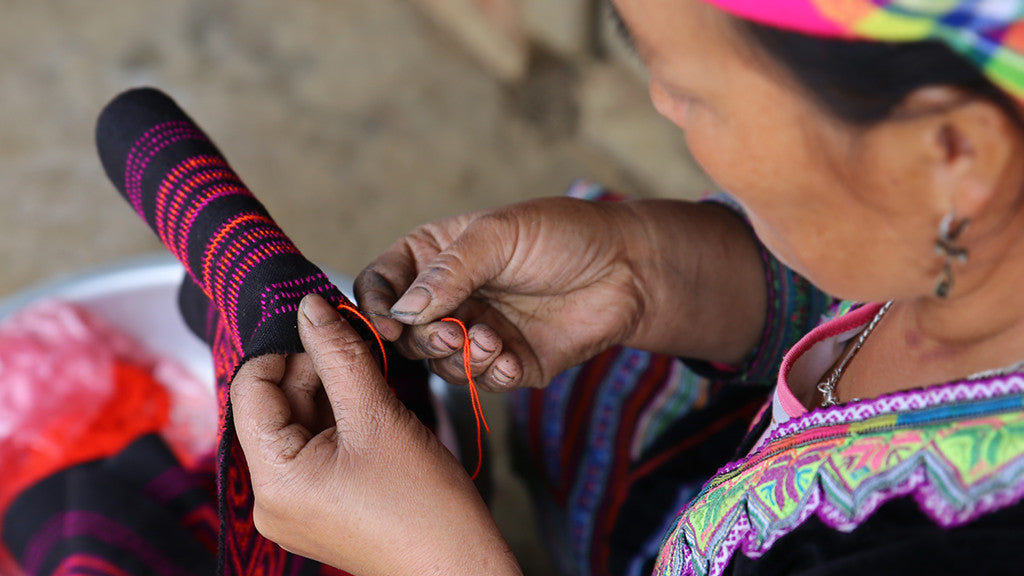
In terms of expression, embroidery is revered as one of the highest forms of creativity in the region. There are countless stitches in use by embroiders all over the world, though they are all variations of three basic kinds - flat, knotted, linked and looped. Some flat stitches, such as running, satin, and cross-stitch lie on the surface of the fabric. Knotted stitches have a raised or studded pattern on the surface. The classic example of a linked or looped stitch is a chain stitch where the first stitch is held in place by the subsequent stitch.
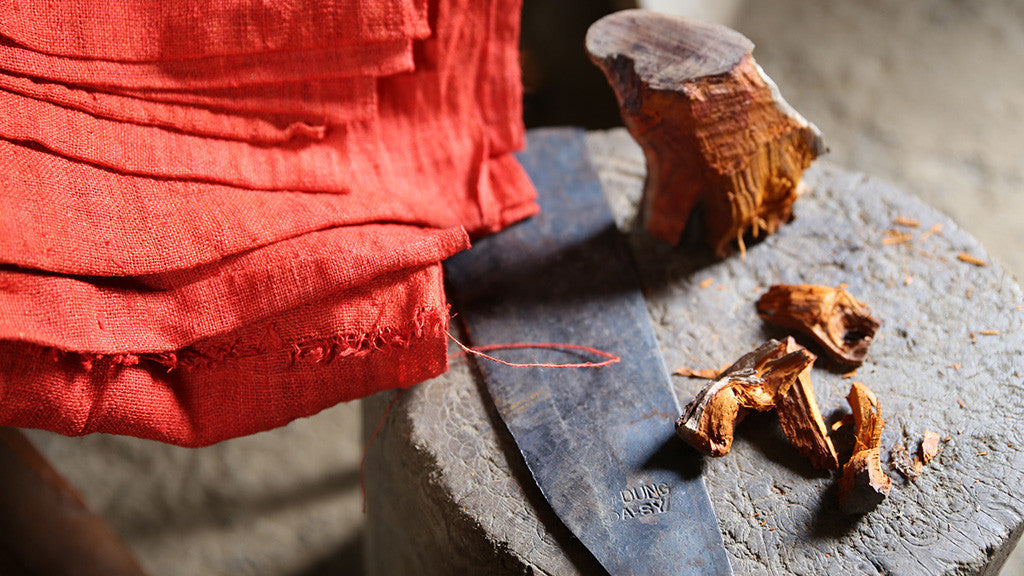
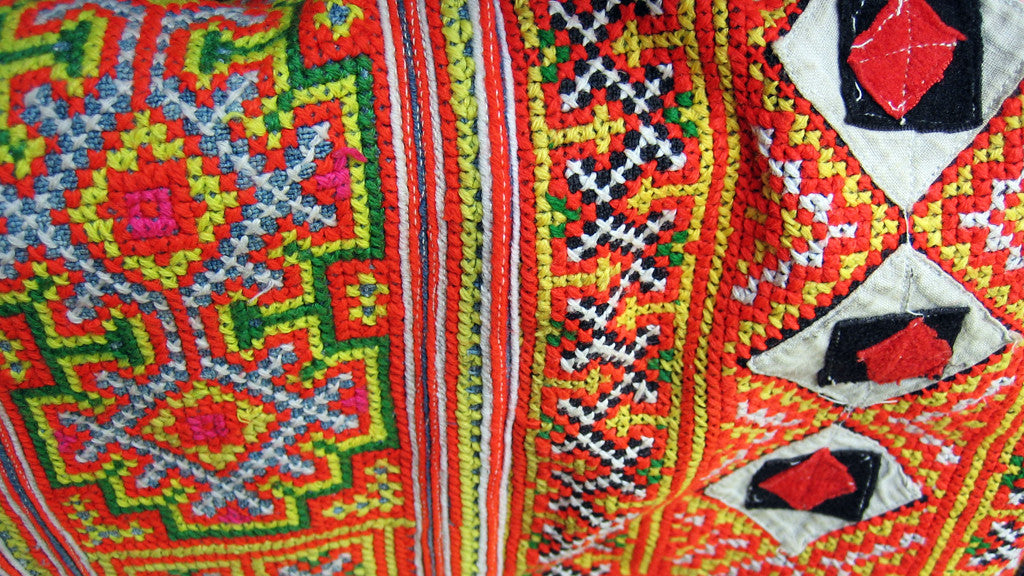
The bright colors of the embroidery thread, cross to create a complex array of symbols on a ‘story cloth’, called pajntaub, which often features a variety of themes based on mythology or nature. The most common motifs used are those found in everyday life including stylized representations of snails, mountains, chicken feet, ram’s horns, cucumber seeds, leaves, stars, rain and the sun. These are intricately threaded by hand to tell the maker’s personal story.

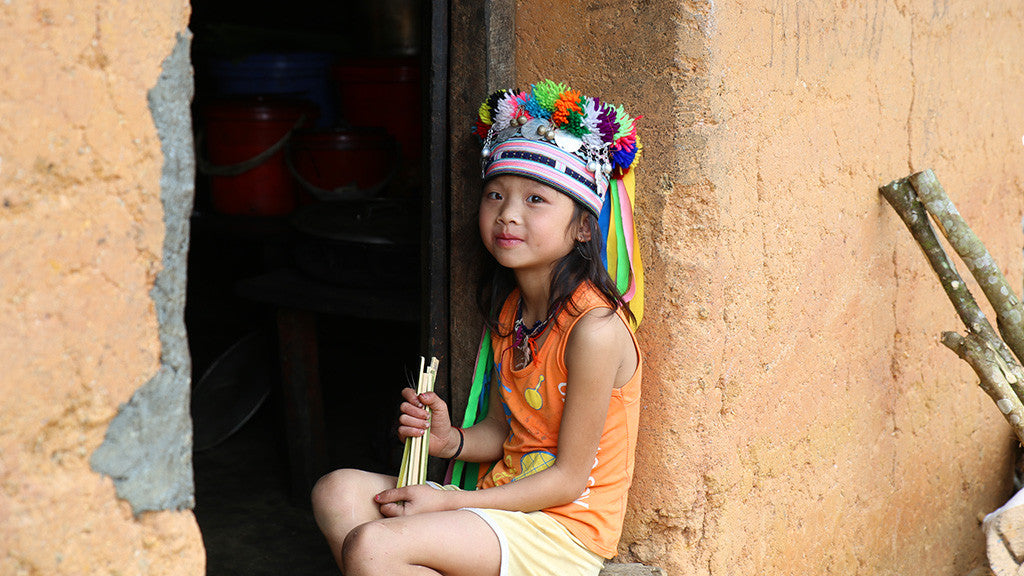
So when you receive your Vietnam 5 or 6 bag, think about the storybook land of Sapa & Lai Chau, where every part of the fabric was cultivated, woven, dyed, sewn, batiked and embroidered completely by hand.

